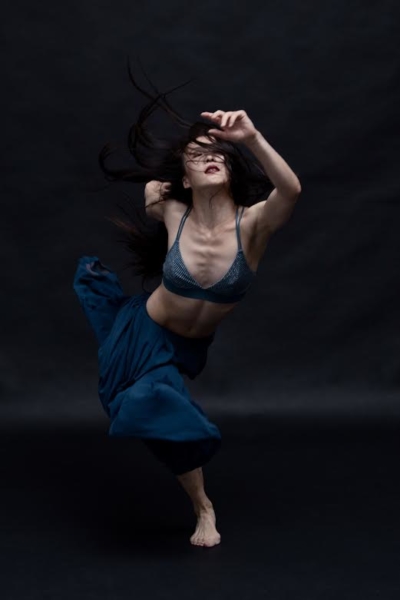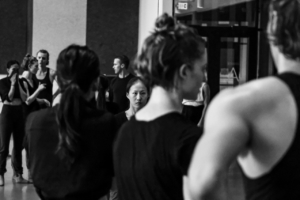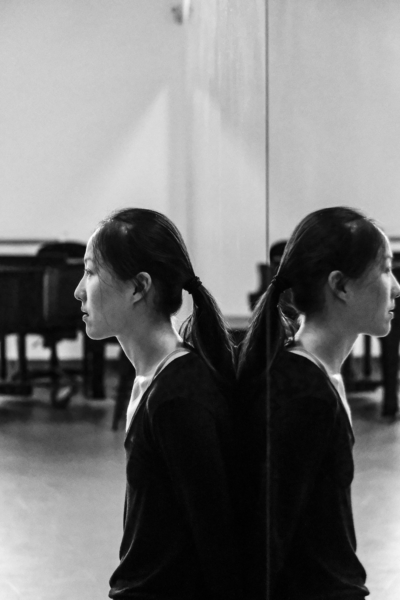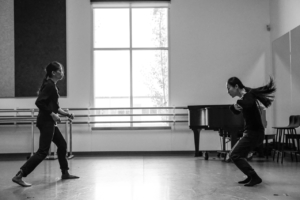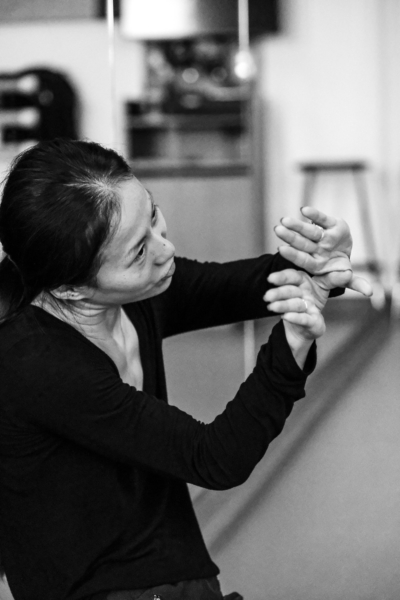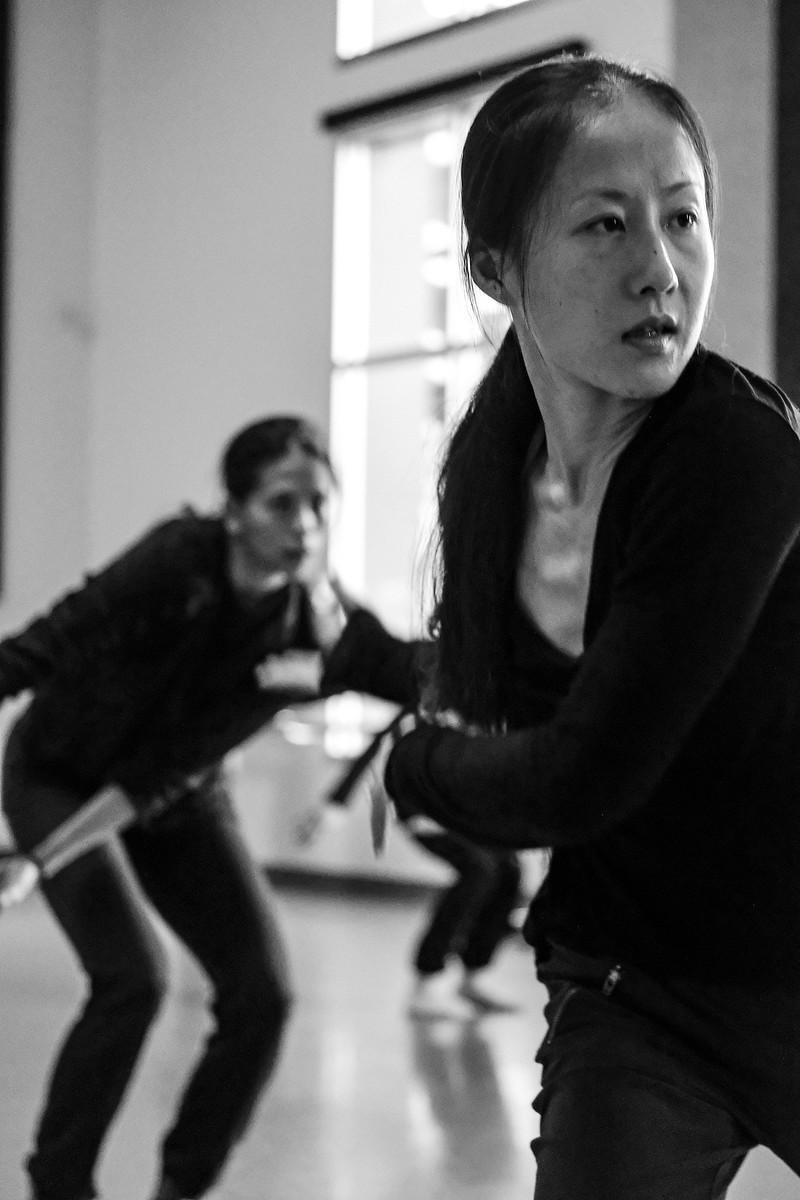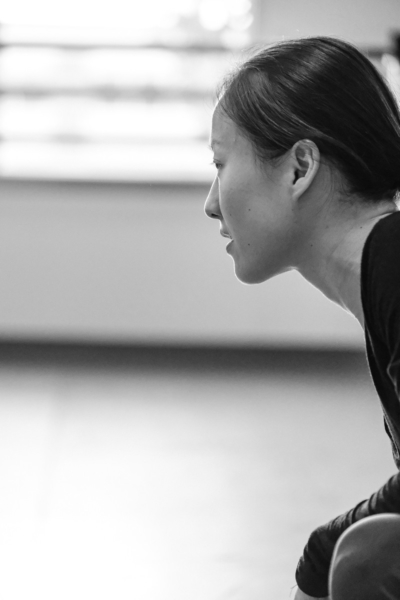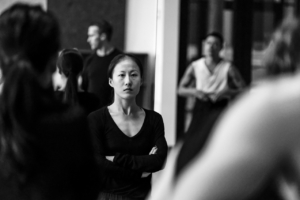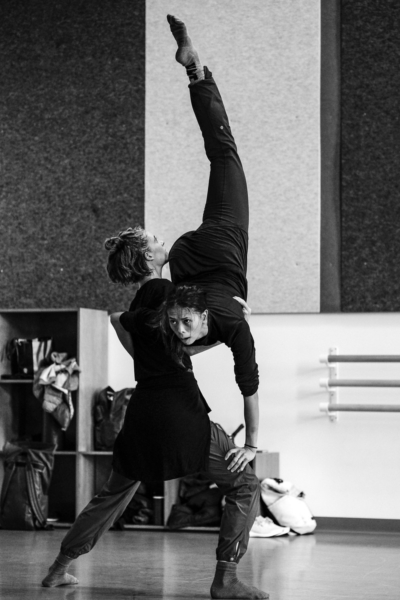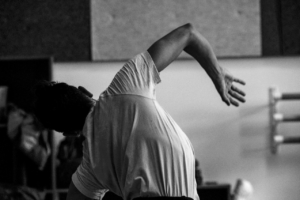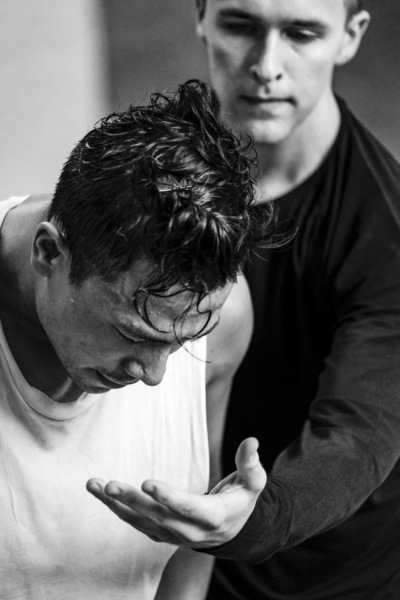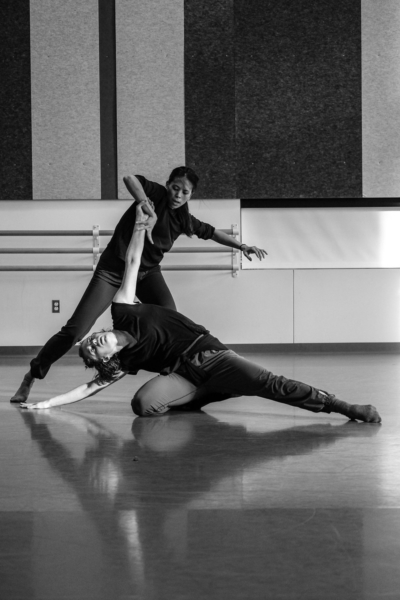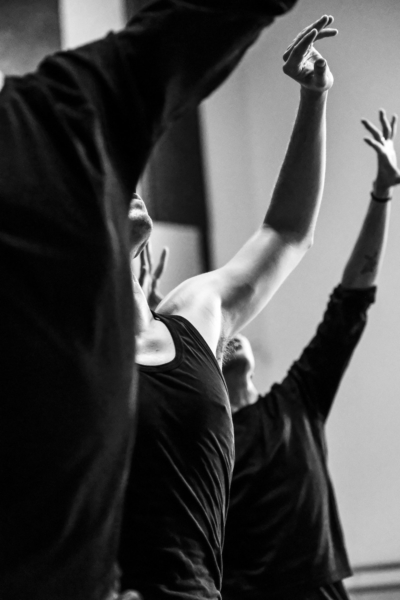When Yin Yue was a small child in Nanchang, China (about 700 km from Shanghai) children had lessons in several arts to see what interests or talents they might have—painting, piano, dance etc. “I did all of them, but only dance was jumping around to music. The others you had to sit still for a long time.” At about 3 she started once a week dance class, then later twice. It was entirely Chinese Classic and Chinese Folk Dance for Yin. She did “no ballet then at all, because for ballet you had to have certain very exact proportion and size” and the tiny vibrant Yin never did. “It was never an option.”
At 11 there was a choice point. “Do you want to continue at twice a week for the rest of your life or go to Shanghai Dance School?” Of course, she wanted to attend the latter, part of the eminent Shanghai Theatre School and went off to boarding school to continue her dance education. It was very strict, “almost military training style.” The course lasted 6 years, again exclusively Chinese classical and folk dance. No modern or contemporary dance at all. “No one even knows what it is.,” Yin says, The regime “is strict, competitive and performance-oriented, and we had 1 or 2 teachers for the whole time—that’s it.”
“When I graduated and couldn’t go to the exclusive company,” she continues, “I chose a college not affiliated with the dance school. So I was able to pick a contemporary course,” which was quite unusual for that time and place. “Yeah, we dance barefoot.” In fact, the “so-called” Martha Graham technique she was taught was learned by the teacher from a video. Very different from her previous experience was the strength training—planks, pushups and contractions. “Everyone wondered why.” In the Chinese dance she had done so far, “they didn’t want girls to look strong” but willowy and delicate.The two-year dance program in college included academic classes, but the dance was limited. After her first year, Yin notes, “there wasn’t new material, no guest choreographers or learning the work of others.” So, “to fill in time,” the students choreographed, inventing things themselves. There were no summer intensive options, either, and as a result, with no You-Tube or Google to browse, “we really could ask ourselves Is there any other choreography?” And certainly she got no sense of a body of knowledge one should know.
Yin admits, “I don’t know how I got the idea of going elsewhere. That had to be the true motivation if you wanted to continue.” She clearly has an unusual mind, one that really does think for itself. During these years the numbers of dance students dwindled from 20 or 25 to a mere handful. There was the question of what to do after college. Luckily for Yin, her mom believed in education and told her “You should continue,” and Yin looked into what kind of an MFA she might get in China. It was discouraging. “You are the actual dancer,” she notes, “but it’s still the same stuff. Only so much you can study.”
In the end, “Desperation drove me to say Let’s go, first to London.” But the only possibility she knew of there was the Laban School of Dance, recommended by her professor. “I was not happy with that. I would have to study all that [dance notation]. I wanted to move.” So New York it was. NYU came up first. “Little I know it’s the most expensive.” She sent in her material in and was accepted and went for 2 years. She had no scholarship the first year; they didn’t offer them for international students, for whom, in fact, there were only 3 spots available—a Polish girl and a Mexican boy in addition to herself. The second year she did get some financial support.
Of course, Shanghai is a big city too, but I ask Yin if it was a shock to be in New York. “The shock was how the school system worked,” she says. “It’s not like China where they say: Do this.” Here you have to build your own program. It was hard to figure out what to study. She took chances on choreography, creating several solos and group pieces. “I always signed up to do it.”
At first in New York, Yin stayed in NYU housing, but it was too expensive. If you decided to leave, they gave you a week without paying to find another place. The first option she tried was a scam, where she put down $400 (feeling clever not to have to pay the usual $800) and lost it. She went to the police, but it was a frustrating waste of time. Back at the dorm, she pretended not to be living there for another week, so she wouldn’t be charged and luckily found an East Village apartment to share with another woman. After that, she moved a lot, “maybe 10 times, always only to places in the East Village or Brooklyn.” She wanted to immerse herself in the U.S. culture, not melt into a Chinese enclave. As she says, “I plug myself fast into the language and culture. I’m pretty adaptable anyway, so it isn’t a huge issue.” As to English, in China she took classes on a very basic level. Most of what she learned was studying on her own to pass the proficiency test to be allowed to come to New York. After that her language skills grew from her being a curious and engaged person in daily contact with English speakers.When Yin’s 2-year NYU program ended, she was allowed to stay in the US for one more year on her visa, so the big question was how to stay longer. She worked at a fitness company at first, earning “good hourly money” and also freelanced for 2 dance companies. “The only dance companies I’ve ever worked for.”
Yin obviously loved contemporary dance and thrived on living in New York, “but it never quite worked” for her to join another company. She would audition and then decide no, eventually coming to the conclusion that “If I want to make a dance I want, I put myself in it.” Yin’s dance style grew, developing a “a more consistent flow” and evolving into her own unique FoCo Technique technique, based on Chinese classic and folk dance. As her website says, It is the active engagement of five elements and three rhythmic stages in the dancer’s approach to movement and performance.
The five elements are root/ground, wood/axis, water/surrounding, metal/resistance and fire/kinesphere. Each element applies to the quality of movement and its corresponding body parts when applicable. It is only natural that a dancer embodies one element more so than the other. Hence, it is the training in FoCo Technique that drives the dancer to masterfully integrate all elements, resulting in finessed texture and well-rounded movement quality.
The three rhythmic stages are pulse, drop and flow. Each rhythmic stage is explored through choreographic dynamics and translated into the body’s physical and emotional expression. During the training of FoCo Technique, dancers are expected to proficiently embody and convey time and meter in their movements, as well as steadily change its tempo in an efficient manner. In all, FoCo Technique trains dancers to approach movement with masterful grasp of textural and dynamic quality.
Yin made dances for festivals and wherever she could find an opportunity, using her own name but different dancers. Over the last 10 years, her company has come into being, its name pruned down from Yin Yue (the second name was hard to pronounce) Dance Company to YYDC. Last year it was finally incorporated as a “real, legal, non-profit.” In the words of its website, the company “aims to discover powerful imagery by pushing bold athleticism within sensual and fluid movement. We take risks in performances by demanding authentic presence from each individual voice and cultivating public interest in Yin Yue’s artistic vision and movement signature, FoCo Technique.”
“You sound like a very determined person” I remark. “Not really determination,” Yin replies, “It’s something I want, not a decision. Even now I don’t feel it’s too much.” She laughs and says, “It’s just getting started, always changing, developing and evolving.”
Coming to work with Whim W’Him this winter, Yin says, is “the right place at the right time. It is a good moment for me and Whim W’Him to make a piece together.” The new work she has created is “a conceptual abstract piece. There’s no particular character or time. It is people dancing and so every gesture means something. The dancers are who they are, but a … presented version”—how the dancers puts themselves forward on the stage is only one aspect or viewpoint of who they are.
“The Most Elusive Hold,” deals in “a sense of time changing, in 20 minutes a journey of a lifetime. The beginning and end almost demonstrate opposite sides of [the dancers] experience. They start full of energy. By the end they have been through a lot and we’ve seen it happen,” both within themselves and in interaction with each other.
“The power of how you execute a move, it brings out what you are. Emotion and sweat.” And then the audience’s action is added in. I ask, “What is the role of your FoCo technique in working with the Whim W’Him dancers?” “I used FoCo Technique as reference, the piece was not entirely fueled with this particular technique but the sense of resistance and the grounded quality are throughout. It is always a challenge for dancers who don’t work with me on regular bases to work with other/my movement vocabulary and make it comfortable and confident. It takes time to make that transition.”
Last night, after her piece opened the dress rehearsal, she said she thought the dancers were a bit nervous. Usually it’s possible to run a piece first then go right into the dress only the schedule hadn’t worked that way this time. “It’s best if they are a little tired the first time.” But Yin was looking very pleased, itching to give them a few notes yet glad that the dancers have understood and can embody what she is looking to bring out. “The dance is there.”
Photo credit: Since photos from Yin’s early life were unavailable, except for the colored photo at the beginning of this post, all images were taken by Stefano Altamura at Whim W’Him rehearsals for her new piece, The Most Elusive Hold.
